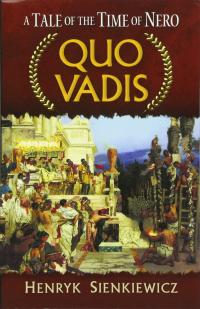
Historical novel, set in imperial Rome, in the time of St. Peter, St. Paul and Nero (63 AD), based on many documented historical facts. The title of the book derives from a Christian tradition: St. Peter was fleeing Rome to save his life when, suddenly, he saw Christ on his way to the city, so he asked him: Quo vadis, Domine? (Where are you going, Lord?). After receiving the answer Romam eo iterum crucifigi (I am going to Rome to be crucified again), St. Peter decided to return to the city, where he was later martyred.
The book is a masterpiece of Christian literature. It describes very well both the pagan Roman atmosphere of the time (marked by life in the villages, games, debauchery, orgies, etc.) and the figures of the first Christians (the family of Aulos, the conversion of Marco Vinicius) and their way of life. It also relates the persecution of Christians and some scenes of martyrdom. The historical figures are very well portrayed (Nero, Tigelino, Petronius, Seneca, St. Peter, St. Paul). Vinicius is the archetype of the patrician who becomes a Christian and Chilon of the adventurer who converts. The author received the Nobel Prize in 1905 and the book has been adapted for cinema on several occasions.
